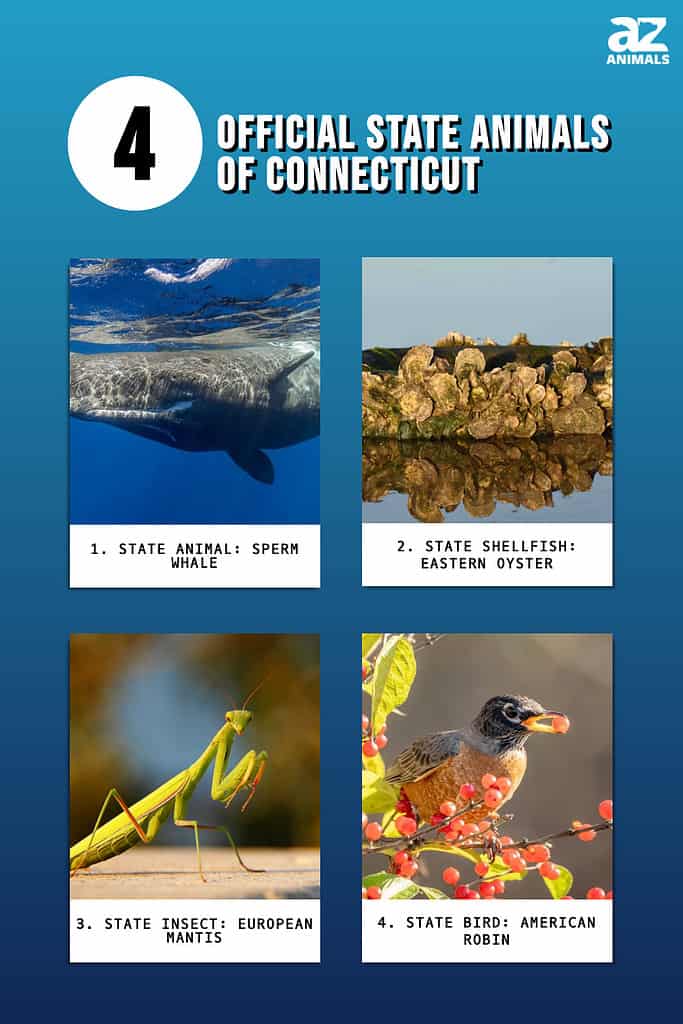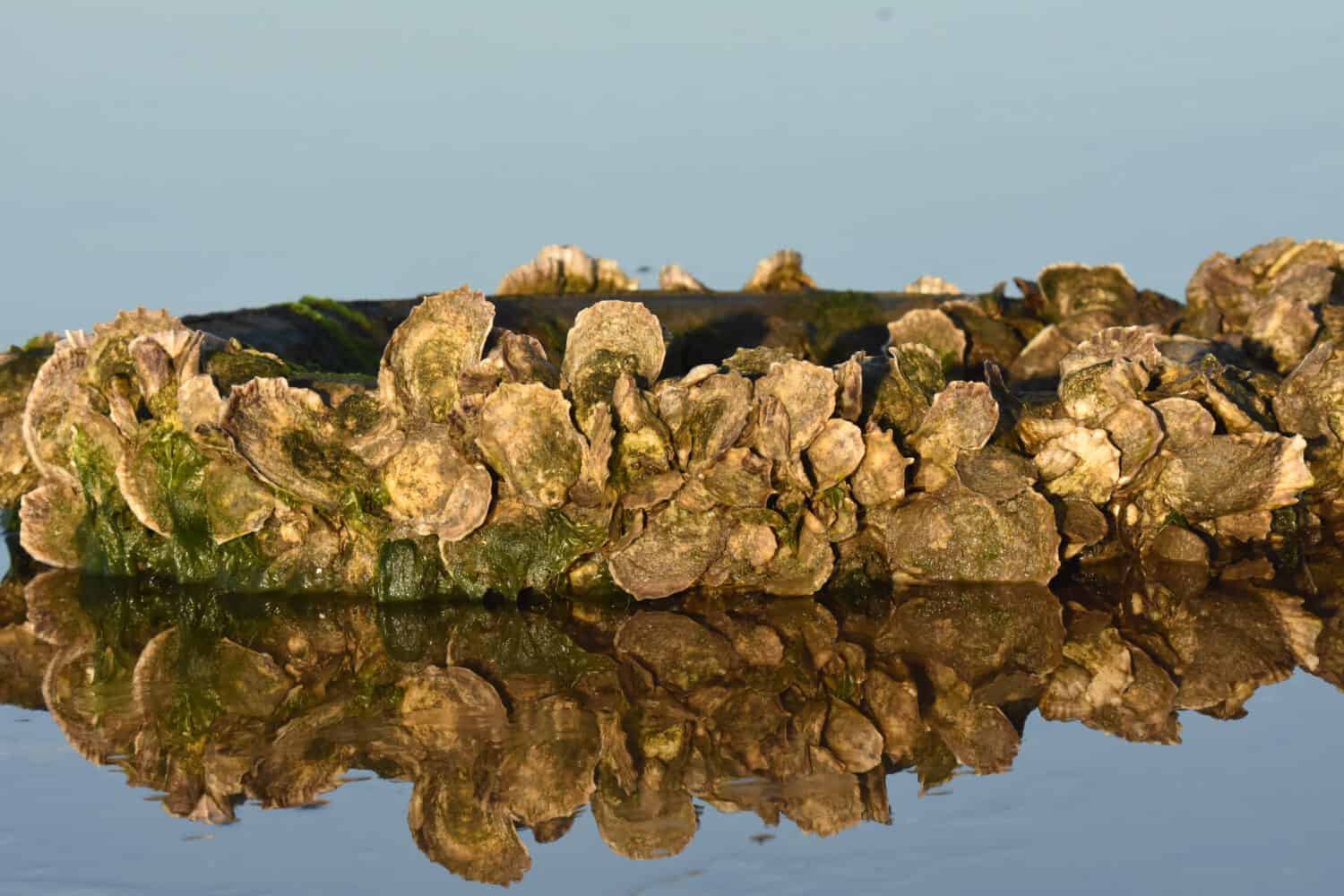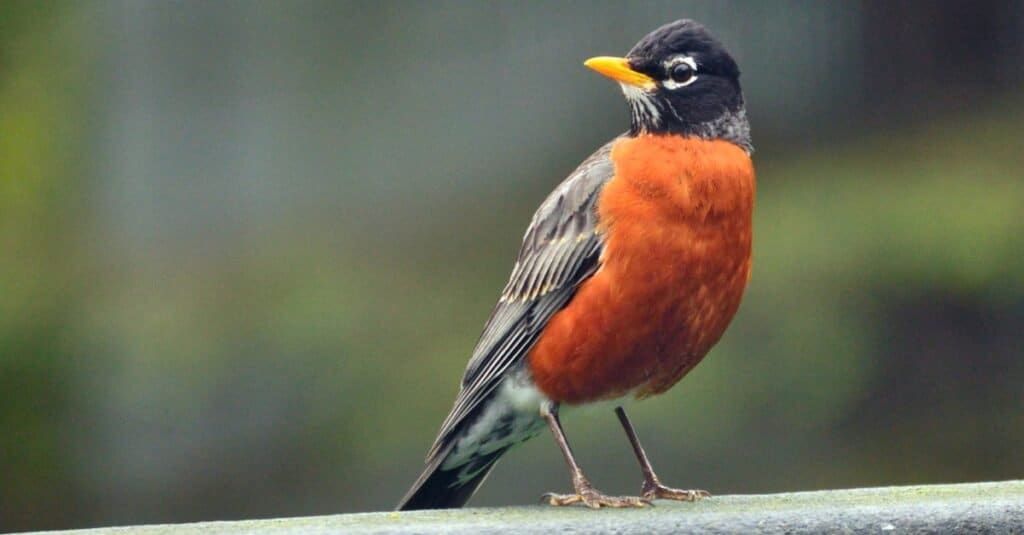
Despite being the third-smallest state in the United States, Connecticut is home to a wide range of amazing animals! But unbeknownst to many state natives and long-term residents, the Constitution State actually has an official state animal, as well as an official state bird, insect, and even shellfish. What are these unique animal species, and why are they so important to Connecticut’s history? Read on to find out, as well as learn some interesting facts about each!
1. State Animal: Sperm Whale (Physeter macrocephalus)

Connecticut’s General Assembly certified the sperm whale as the state animal in 1975.
©wildestanimal/Shutterstock.com
Although most whale species are very large-bodied animals, the sperm whale is unique for being among the largest! It’s capable of growing to around 40 to 60 feet long, with males being slightly longer and heavier than females. It’s also common for sperm whales to weigh 10 to 40 tonnes when fully grown. Newborn sperm whales actually weigh around 2,000 pounds upon birth!
Despite being an endangered species today, the sperm whale once played a huge role in Connecticut’s economy. In the 1800s, the state’s whaling industry was booming. This was thanks to the valuable oily, waxy substance, or spermaceti, in the whales’ massive heads. Crucially, the oily material was ideal for oil lamps at the time, as well as many other staple products. Connecticut’s General Assembly certified this species as the state’s official animal in 1975.
In addition to simply being one of the largest animals on earth, sperm whales also have the largest brains out of any known extinct or modern animal! Strangely, though, since the olfactory system in its brain is very small, sperm whales have a rather poor sense of taste and smell. Not that the whales need to be able to smell–they’re able to dive up to 3,000 feet in search of their favorite prey, cuttlefish!
2. State Shellfish: Eastern Oyster (Crassostrea virginica)

European settlers in North America in the 17th and 18th centuries used eastern oysters as an important food source. Connecticut certified it as the state shellfish in 1989.
©Gilbert S. Grant/Shutterstock.com
The eastern oyster doesn’t look particularly interesting or exciting at first glance, but this species is also an important piece of Connecticut’s culture and history. In the late 1600s and early 1700s, early European settlers in North America found the eastern oyster to be extremely useful as a food source. Since oysters were very abundant in the area and didn’t move very quickly as most fish species do, it was easy for settlers to harvest them in large numbers. Eventually, Connecticut’s oyster farming industry got its start in the late 1800s, and it continues to thrive today.
As a bivalve mollusk, the eastern oyster has a compressed body that fits cozily into a hinged shell made up of two halves. It starts its life as a very small and highly mobile spawn before gradually maturing into a much slower-moving adult.
While juvenile eastern oysters actually pursue and hunt their food, adult oysters filter feed. Typically, an oyster will move along with the help of its large, fleshy “foot” before finding an area to adhere itself to via said foot. After settling down, it will suck in large amounts of water, eating small organisms like plankton and “spitting” out the rest of the water and debris.
Connecticut’s General Assembly officially certified this species as Connecticut’s official state shellfish in 1989. Although the state is home to many species of oysters and other shellfish, the eastern oyster is among the most popular and well-known by locals.
3. State Insect: European Mantis (Mantis religiosa)

The European mantis, or praying mantis, became the official state insect of Connecticut in 1977.
©Tatyana-Sanina/Shutterstock.com
Connecticut seems as though it would be a bit too chilly for most insects in general, let alone be warm enough for an official state insect to reside in the area! Still, some species manage to take up residence in the area, even if only during the warmer months.
Also known as the “praying” mantis for its strange-looking posture and distinct positioning of its forelegs, the European mantis is an incredibly resilient insect. Connecticut’s General Assembly certified the species as the state’s official insect on October 1, 1977.
Like its common name implies, the European mantis is not actually native to Connecticut or the United States in general. In fact, the species doesn’t even live in the state year-round! It’s native to much warmer regions like southern Europe, northern Africa, and some parts of Asia. However, they do migrate to the northeastern United States each summer in large numbers to soak up the sun–until they rapidly die off when autumn rolls back around.
The European mantis’ impressive size is perhaps its most noticeable feature aside from its long, heavily modified forelegs. Fully-grown individuals average 6 to 9 centimeters long. Thanks to its large yet speedy body and raptorial forelegs that allow it to reach out and grab its prey, the species is a highly efficient predator. It’s also skilled at evading predators of its own. This is partially due to its reliable startle display, where it spreads its wings and bends its legs to make itself appear much larger than it actually is.
4. State Bird: American Robin (Turdus migratorius)

The American robin is North America’s most abundant land bird. It became Connecticut’s state bird in 1943.
©iStock.com/PhotosByMSA
The last of Connecticut’s four official state animals is its state bird: the American robin. As North America’s most widespread and abundant land bird, experts estimate more than 370 million individuals exist within its native range. It’s also a migratory bird that feeds on plant matter like berries and nuts as well as a wide range of insects. Though it is small and very speedy, it lacks any reliable defenses. This makes it very vulnerable to predators like domestic cats, snakes, and hawks.
In total, seven subspecies of the American robin currently exist. Most subspecies are morphologically very similar and mainly differ by their migratory range. All species share the same distinctly rust-red feathers along the chest and belly. Meanwhile, the rest of its body is dark brown with white accents around the eyes and lower abdomen. On average, fully-grown individuals range from 9 to 11 inches in length and have a 14- to 16-inch wingspan.
In particular, the eastern and Newfoundland subspecies are most common in Connecticut as well as much of the New England area. Connecticut’s General Assembly certified the American robin as the state’s official bird in 1943. Notably, the species is also the official state bird of Wisconsin and Michigan.
The photo featured at the top of this post is © Bonnie Taylor Barry/Shutterstock.com
Thank you for reading! Have some feedback for us? Contact the AZ Animals editorial team.






